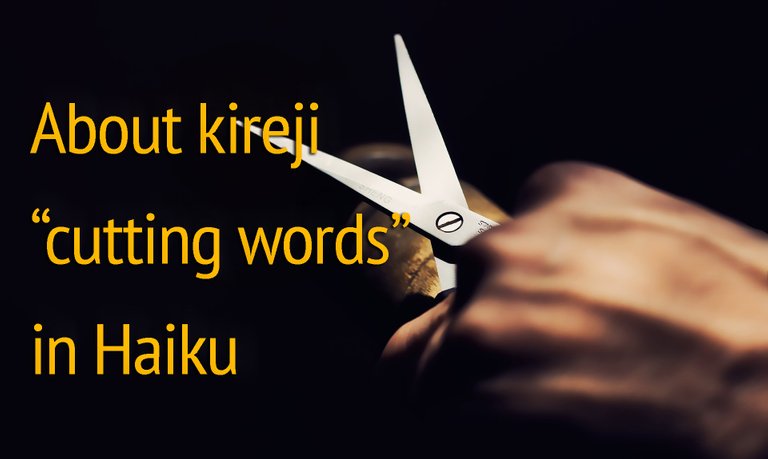
A few days ago @boxcarblue left a great comment about some confusion he had over the haiku I posted. Actually he left two comments. Evidently there was some weirdness going on when he tried to edit the original comment. I left a huge reply to the first and a smaller reply to the second.
I was thinking a few things here. 1) Shame to put that mind dump in comment form where few of you will see it. 2) This is info a lot of you may also be confused about. 3) So therefore I should expand that comment into a post. And so I am.
One of his questions was about the nuances of a Japanese word. I think we can safely skip that one in this post as few of you are probably interested in learning any Japanese. His other question was also about Japanese but the answer to that one leads us to a fundamental aspect of haiku that does impact haiku in other languages, so this is of interest to all of you.
It involves something called kireji (切れ字), sometimes translated to English as "cutting words". Let's explore!

Kireji are very common in haiku. Most traditional haiku have kireji in them. Modern haiku might not, especially if they are following one of the free-form styles, but they are still common enough. Their purpose is to give us a pause for intensifying the effect of the poem and allowing our imagination to fill in the gaps. They can carry a sense of awe, or doubt, or introspection, a sense of the profound, or...so on, depending on the context. Often they are used somewhere in the middle of the haiku, in effect "cutting" the poem in two.
In Japanese there are many kireji. This will be of little interest to any non-Japanese speakers, but among them the most common are probably kana, ya, and keri.
In addition to the usages that I mentioned above, they are also very handy for filling out mora count. I covered this before, but without getting too far into it, mora (or haku 拍) are similar to syllables but usually shorter. Anyway, if one is following the traditional form of 5/7/5, having the ability to use kireji is very convenient to get that perfect mora count. This is, incidentally, one of the reasons kireji may not be as common in modern free-style haiku.
With that out of the way, let's look at two examples from Bashō.
寒さ哉 雪を待つ程 かげろひの
samusa kana yuki o matsu hodo kagerō no
how cold it is kana
waiting for snow
winter shadows
The kireji here is kana at the end of the first line. It is being used to emphasize the feeling of cold and anticipation. It's also being used as a kind of pause for the reader to put themselves in the scene and feel it.
古池や蛙飛込む水の音
furuike ya kawazu tobikomu mizu no oto
an old pond ya
a frog leaps
sound of water
The kireji here is ya, again at the end of the first line. As in the other one, it's being used to set the scene, to emphasize the feeling of the old pond, to invite the reader to pause and imagine it and give their mind a chance to fill in all the details of the scene that the haiku doesn't mention.
These examples just happen to have the kireji at the end of the first line, but it can be at the end of the second or last as well. It can create a slightly different effect when placed at the end, that of more closure.
In English translation, many translators just completely ignore kireji. Many others replace kireji with punctuations such as an em dash (—), an ellipse (…), two hyphens (--), or a colon (:). You might see others. These punctuation can kind of hint at what the kireji were being used for, so it's a decent translation, if imperfect.

So how does this all affect haiku written originally in English? Well, I think following the example of translators and using punctuations isn't a bad idea. I don't tend to use any punctuations in my English haiku, but I do sometimes break that rule and use punctuations for hinting at a kireji effect.
Another option is to use an exclamation interjection, such as ah!, oh!, or something similar. If you want an older feel, you could try something like lo! or hark! In fact those do somethings appear in English haiku and haiku translations.
Whatever option you pick, I think it's worthwhile thinking about them when writing a haiku and considering how you might amplify effect in the same way that these special words do.
(title graphic made from this photo by saeed kebriya from Pixabay)
❦
 |
David LaSpina is an American photographer and translator lost in Japan, trying to capture the beauty of this country one photo at a time and searching for the perfect haiku. |
